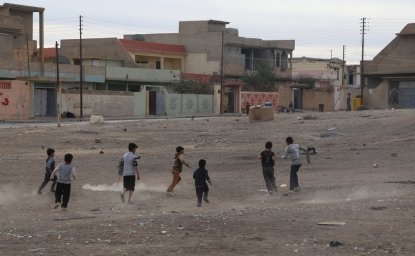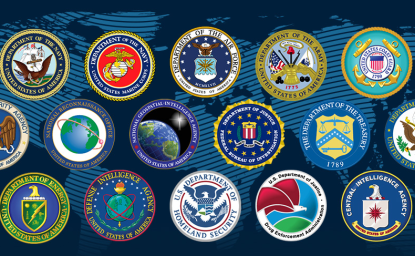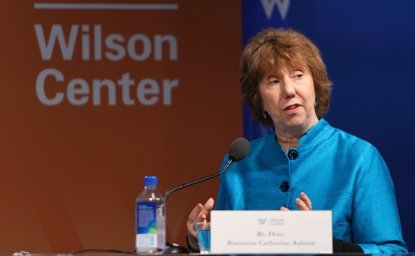ISIS continues to emphasize external attacks as a result of strategic military setbacks in Iraq and Syria in 2017, according to a January report from the UN Security Council Monitoring Team concerning the Islamic State (ISIS, ISIL, Da'esh) and al Qaeda. The team concluded that the al Qaeda network is resilient and its affiliates remain the primary terror threat in some regions, including Somalia and Yemen. The twenty-first report provides an overview of the ISIS and al Qaeda threat, and explores regional trends in the Levant, Arabian Peninsula, Africa and beyond. The following is an excerpt from the brief.
Summary
In Iraq and the Syrian Arab Republic, Islamic State in Iraq and the Levant (ISIL) lost control over all remaining urban areas. The group continues to transform into a terror organization with a flat hierarchy, with cells and affiliates increasingly acting autonomously. The global fight against ISIL will have to focus on the threat posed by less visible international networks. The combination of “frustrated travellers”, ISIL sympathizers, returnees and relocators poses an increased security risk for Member States. Attempts by ISIL to infuse money into the licit economy in combination with a greater inflow of funds for reconstruction of recaptured areas will necessitate adjusted counter measures.
The global Al-Qaida network has remained resilient and in several regions poses a greater threat than ISIL. Despite being under military pressure, Al-Qaida in the Arabian Peninsula (AQAP) (QDe.129) increasingly serves as the communications hub for Al-Qaida as a whole. In North and West Africa, Al-Qaida affiliates and groups loyal to ISIL increased their activities; while in East Africa, Al-Shabaab (SOe.001) has sustained its dominance over ISIL groups. In South Asia, Al-Qaida affiliates and ISIL are taking advantage of the volatile security situation in Afghanistan. Although the recapture of Marawi City by the Philippine authorities was a military success, ISIL affiliates’ temporary stronghold within the city was a propaganda victory with potential long-term consequences for the region.
The global flow of foreign terrorist fighters has continued to slow, with only individual cases being reported. However, the marked reduction of territorial control by ISIL in Iraq and the Syrian Arab Republic will force many foreign terrorist fighters to make a choice either to join other groups or to leave the region. With the adoption of resolution 2396 (2017), the Security Council has taken a significant step to meet the challenges posed by returnees and relocators.
Overview of the threat
A. Evolving threat from Islamic State in Iraq and the Levant and Al-Qaida
1. ISIL suffered strategic military setbacks in Iraq, the Syrian Arab Republic and the southern Philippines during the second half of 2017. As a response, the organization continues to emphasize external attacks. At the same time, the global Al-Qaida network has remained remarkably resilient. Al-Qaida affiliates remain the dominant terror threat in some regions, such as Somalia and Yemen, a fact demonstrated by a continuous stream of attacks and foiled operations. In West Africa and South Asia, Al-Qaida affiliates remain a threat at least as serious to Member States as ISIL, with ISIL currently remaining unable to reach a dominant position.
2. With the transformation of ISIL, its distinguishing feature — the focus on conquering and holding territory — is disappearing. This will likely also diminish the ability of ISIL to recruit from a wide range of social strata. While ISIL could previously promote itself as a proto-State structure, and therefore also attracted individuals willing to support the establishment of the so called “caliphate”, its potential recruitment pool will now shrink to individuals mainly motivated to fight or to conduct terror attacks. This and increased control measures by Member States had positive effects on the overall flow of new foreign terrorist fighters, which has nearly come to a halt globally.
3. Member States highlighted that some members of both organizations have been willing and able to support each other in the preparation of attacks (see S/2016/629, para. 3). Therefore, the potential convergence of both networks, at least in some regions, is a potential new threat. In addition, Al-Qaida propaganda continues to highlight a new generation of potential leaders, such as Hamza bin Laden (see S/2017/573, para. 30), in an apparent attempt to project a younger image to its sympathizers.
B. Transformation of Islamic State in Iraq and the Levant after the loss of territorial control in Iraq and the Syrian Arab Republic
4. The significant and sustained military pressure levied upon ISIL in Iraq and the Syrian Arab Republic resulted in the loss of control by ISIL over urban areas in both countries. As a result of these setbacks, ISIL was forced to evolve and has continued its transformation from a hierarchically organized group, concentrating on conquering and holding territory, to a networked group, emphasizing terror attacks within and outside the conflict zone. 1 Member States highlighted that this new and emerging global network has a flat hierarchy, and that there is less operational command and control from ISIL core over the activities of its affiliates.
5. In addition, the propaganda machinery of the ISIL core is further decentralizing, and the quality of its material continues to decline (see S/2017/35, para. 17, and S/2017/573, para. 20). For example, Member States highlighted that ISIL has claimed responsibility for attacks for which no conceivable connection to the group can be established and that some online publications, such as Rumiyah, have ceased to appear. Nevertheless, while its public propaganda machinery deteriorates, foreign terrorist fighters and ISIL members and sympathizers continue to be able to skillfully employ social media, encryption technology and the dark web to communicate with each other and motivate and facilitate attacks. These capabilities, a growing number of “frustrated travellers”, the persistent threat posed by terrorist groups recruiting insiders in critical infrastructure 2 and the risk that returnees and relocators bring leadership and enhanced terrorist capabilities and infuse these into already existing networks of radicalized sympathizers are major concerns for Member States.
6. As a result of this ongoing transformation, a new phase in the fight against ISIL is beginning. While, in the first phase, the territorial grounding of the group allowed for easier location of its fighters, including foreign terrorist fighters within the conflict zone, during the next phase, locating individuals posing a threat will become more challenging. Information sharing concerning the identity of foreign terrorist fighters as well as known ISIL members will remain vital. The sanctions list remains one of the key global instruments in this regard.
Click here to read the full report.




